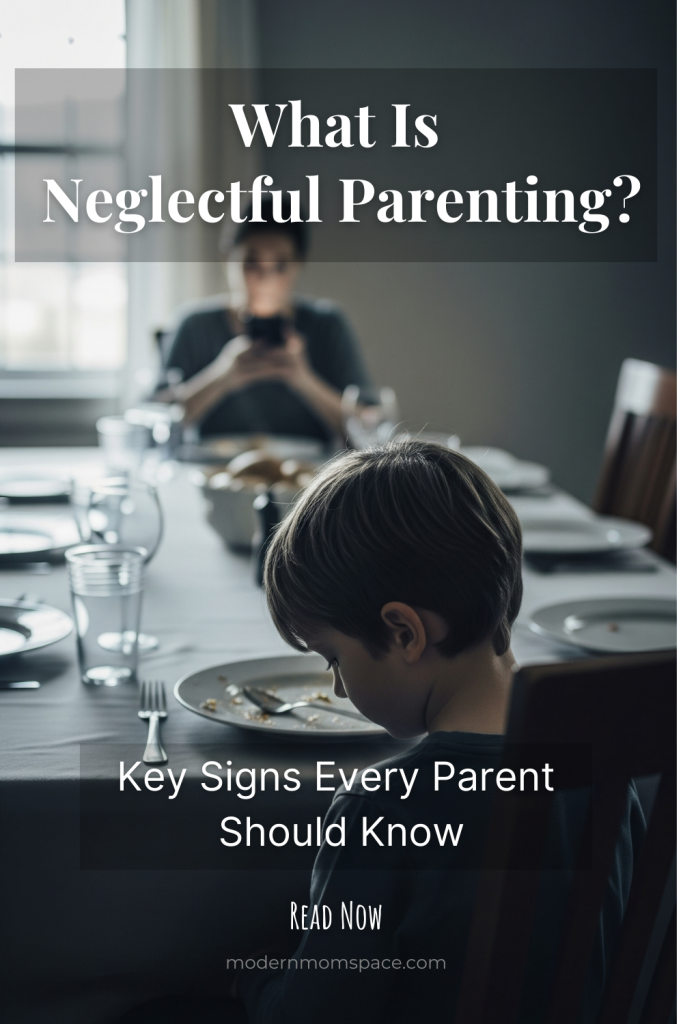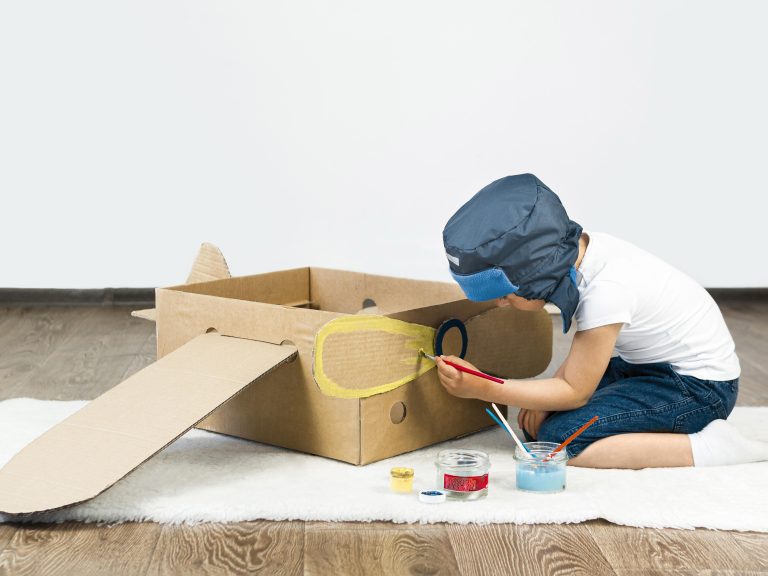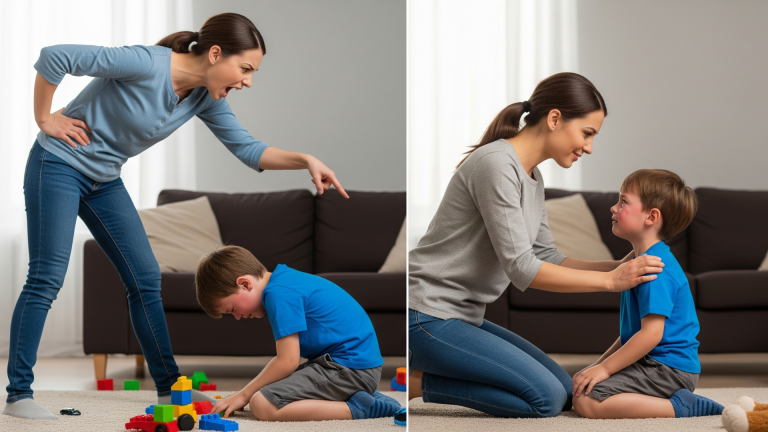Neglectful Parenting: Signs, Risks, and How to Avoid It
Sometimes unintentional, neglectful parenting has the most damaging outcomes. That’s the hard truth. Most parents who slip into neglect aren’t cruel. They are exhausted, overwhelmed, depressed, isolated, or so distracted by survival that there’s nothing left in the tank. This guide is here to help you spot the slide, understand why it matters, and make fast, realistic changes.
Quick gut check:
In the last week, how many times did you have a real back-and-forth with your child for more than two minutes without a device nearby? If your answer is close to zero, keep reading.
What Is Neglectful Parenting?
Neglectful parenting, also called uninvolved parenting, is defined by low warmth and low structure. Caregivers provide little emotional responsiveness and little guidance. In practice, that looks like minimal conversation, rare check-ins, inconsistent monitoring, and few expectations or routines. In psychology, this style was added to the classic Baumrind framework by Maccoby and Martin and is consistently linked with the poorest outcomes for kids.
A crucial distinction: neglectful is not the same as letting kids be independent. Independence has warmth and intentional boundaries behind it. Neglect lacks both.
Why It Happens
Neglect is often unintentional. Common drivers:
These factors raise the risk that kids experience adverse childhood experiences (ACEs), which track strongly with long-term mental and physical health problems. Preventing ACEs starts with consistent, responsive caregiving. (CDC)
No shame, just clarity:
If you see yourself in this list, it does not make you a bad parent. It means you need support and a plan.
Key Characteristics
If several of these line up, you may be drifting toward neglectful patterns:
- Lack of attention. Conversations are rare, short, or surface level. You miss cues.
- Minimal rules or guidance. Bedtime, chores, and screen use are unmanaged or ignored.
- Emotional detachment. You feel numb, irritated, or checked out most days.
- Low monitoring. You don’t know your child’s friends, interests, or what they do online.
- Inconsistent presence. You are physically there but mentally elsewhere, or gone often without re-connecting on return.
Uninvolved parents tend to show little communication, few expectations, and a hands-off approach that leaves kids to self-raise.
Effects on Children
1) Academic and cognitive outcomes
Across decades of research, neglectful parenting is associated with the worst academic performance and weaker executive skills compared with other styles. When warmth and structure are both low, kids struggle to develop self-management and school engagement. (PMC)
Why the brain piece matters: early development depends on serve-and-return exchanges with caring adults. When those back-and-forth moments are missing, children lose key practice in language, attention, and self-regulation. (developingchild.harvard.edu)
2) Emotional and behavioral health
Low responsiveness and guidance link to more externalizing problems over time, like aggression and rule-breaking, and to internalizing struggles such as anxiety and low self-esteem. Meta-analytic work repeatedly finds negative associations between neglectful patterns and behavior regulation.
3) Relationships and attachment
Kids can develop insecure attachment, making closeness feel risky or irrelevant. Teens from uninvolved homes show poorer adjustment, lower self-confidence, and greater psychological maladjustment. (journals.copmadrid.org)
4) Risk behaviors and long-term health
Neglect raises the chance of ACE exposure, which is linked with later substance use, mental health problems, and health risks across adulthood. Reducing ACEs is a public health priority. (CDC)
The hopeful point:
None of this is destiny. Protective relationships and small daily changes can buffer the risks and turn trajectories around.
Signs You May Be Slipping into Neglect
Use this as a self-screen. Persistent yes answers mean it’s time to re-engage.
How to Break the Cycle
The goal is not to be perfect. It is to show up, often, in small doable ways. Use these steps to restore warmth and structure without overwhelming yourself.
1) Start with two daily serve-and-return moments
Responsive back-and-forth is brain-building and reconnects you fast.
Pro tip: Put the phone in a different room. Your attention is the intervention.
2) Rebuild one anchor routine
Pick the easiest win: bedtime, homework check-in, or family dinner.
Structure reduces friction because everyone knows what happens next.
3) Set three clear expectations and follow through
Choose the three that matter most for your family this month. Examples:
Keep consequences natural and predictable. That is authoritative discipline, not harshness.
4) Replace “not now” with micro-yeses
If you’re busy, offer a specific later time and set a timer:
“I’m on a work call for 15 minutes. After that, we’ll build your Lego ship for 10.”
Follow through to rebuild trust.
5) Get help for your bandwidth
If you’re drowning, your child feels it.
6) Create connection rituals that fit your reality
60-second reset:
Right now, send your child a voice note: “Thinking of you. Can’t wait to hear about your day.” That 12-second message matters more than you think.
7) Monitor without smothering
Know your child’s friends, teachers, pastimes, and online spaces. Monitoring is not spying. It is staying interested and informed.
8) When life is chaotic, downgrade the plan, not the connection
If you cannot do a 30-minute bedtime routine, do 7 minutes. A shorter, predictable connection beats a perfect plan that never happens.
What Neglectful Parenting Is Not
When to Worry
If safety is a concern, contact a local helpline, pediatrician, or school counselor. If there is immediate danger, use your country’s emergency number.
How This Differs From Other Styles
For a side-by-side map, read The 4 Parenting Styles Explained, then dive into the Authoritative guide for a realistic alternative.
Putting It All Together: A 7-Day Re-Engagement Plan
Day 1: Choose one anchor routine and write three steps.
Day 2: Two serve-and-return moments. Phone out of sight.
Day 3: Set three expectations. Share them calmly at dinner.
Day 4: One 10-minute special time block with each child.
Day 5: Email the teacher or coach a quick hello and ask one question about your child.
Day 6: Plan one weekend micro-adventure: library trip, park, or pancakes.
Day 7: Review what worked. Keep the wins. Shrink what didn’t.
Celebrate the boring wins:
Consistency is not glamorous. It is how kids learn they matter.
Conclusion
Neglectful parenting hurts kids not because parents don’t care, but because care isn’t consistently delivered. The fix is not grand gestures. It is daily presence plus predictable structure. Start tiny, keep it steady, and get help where needed.








